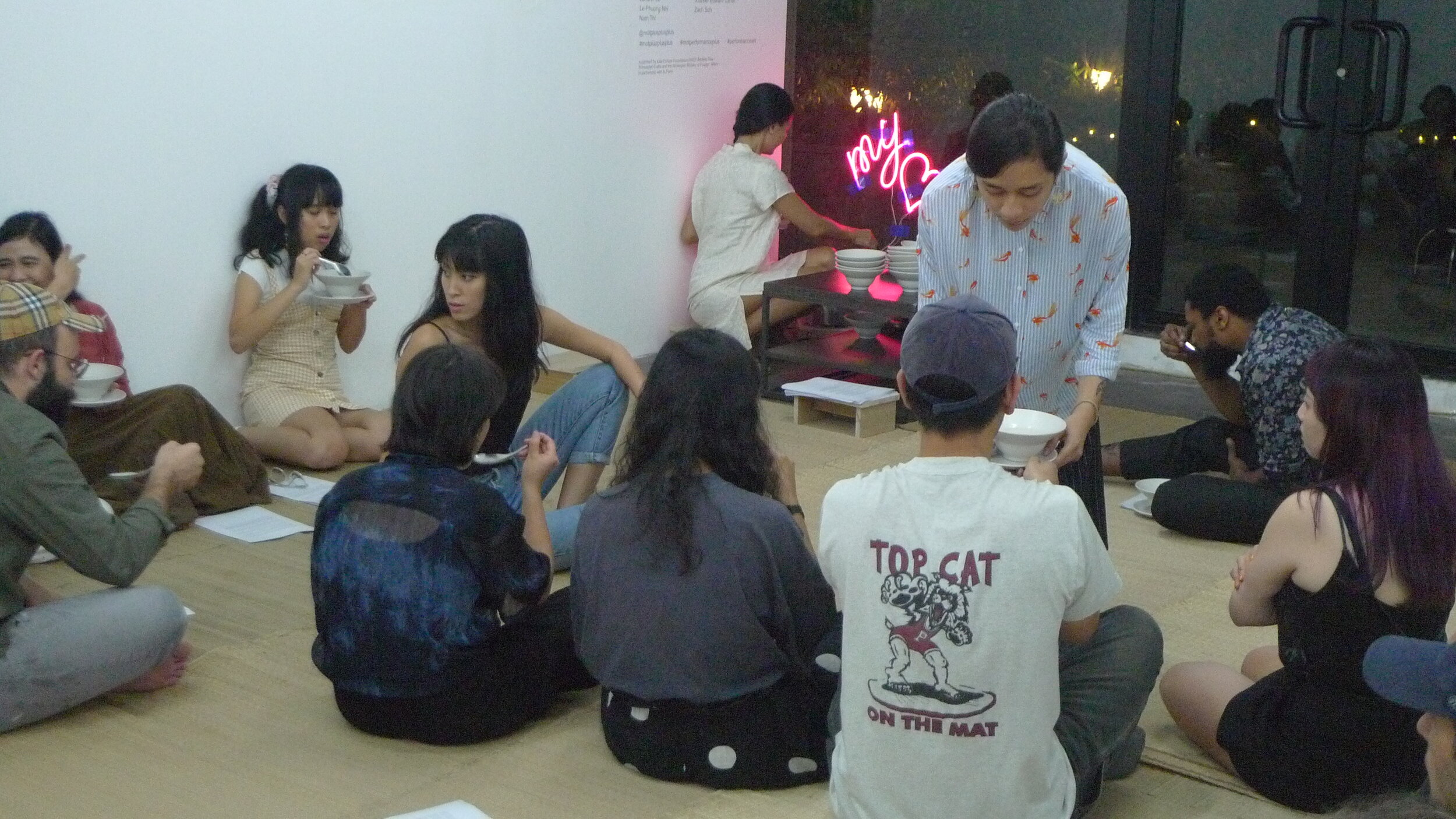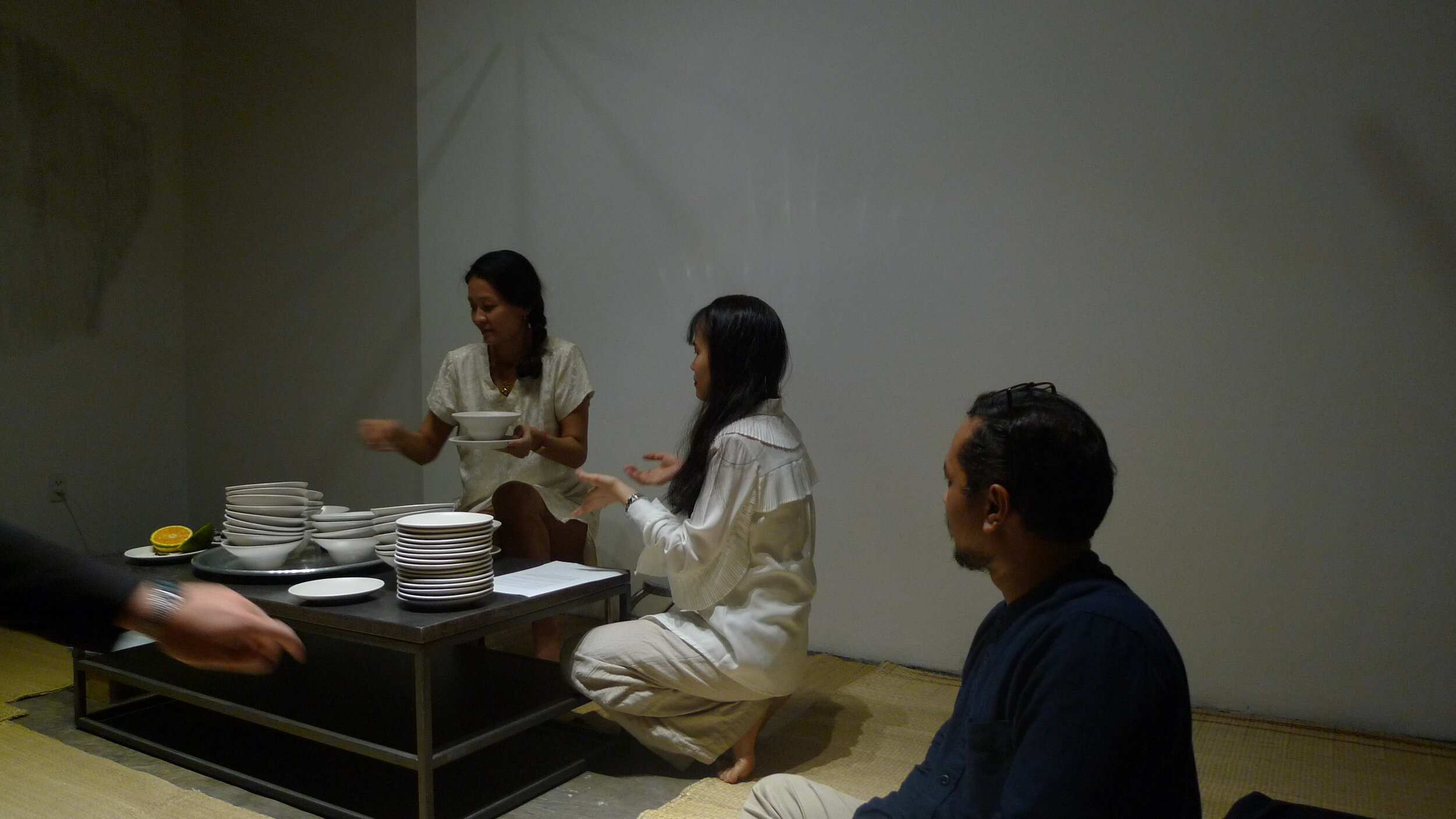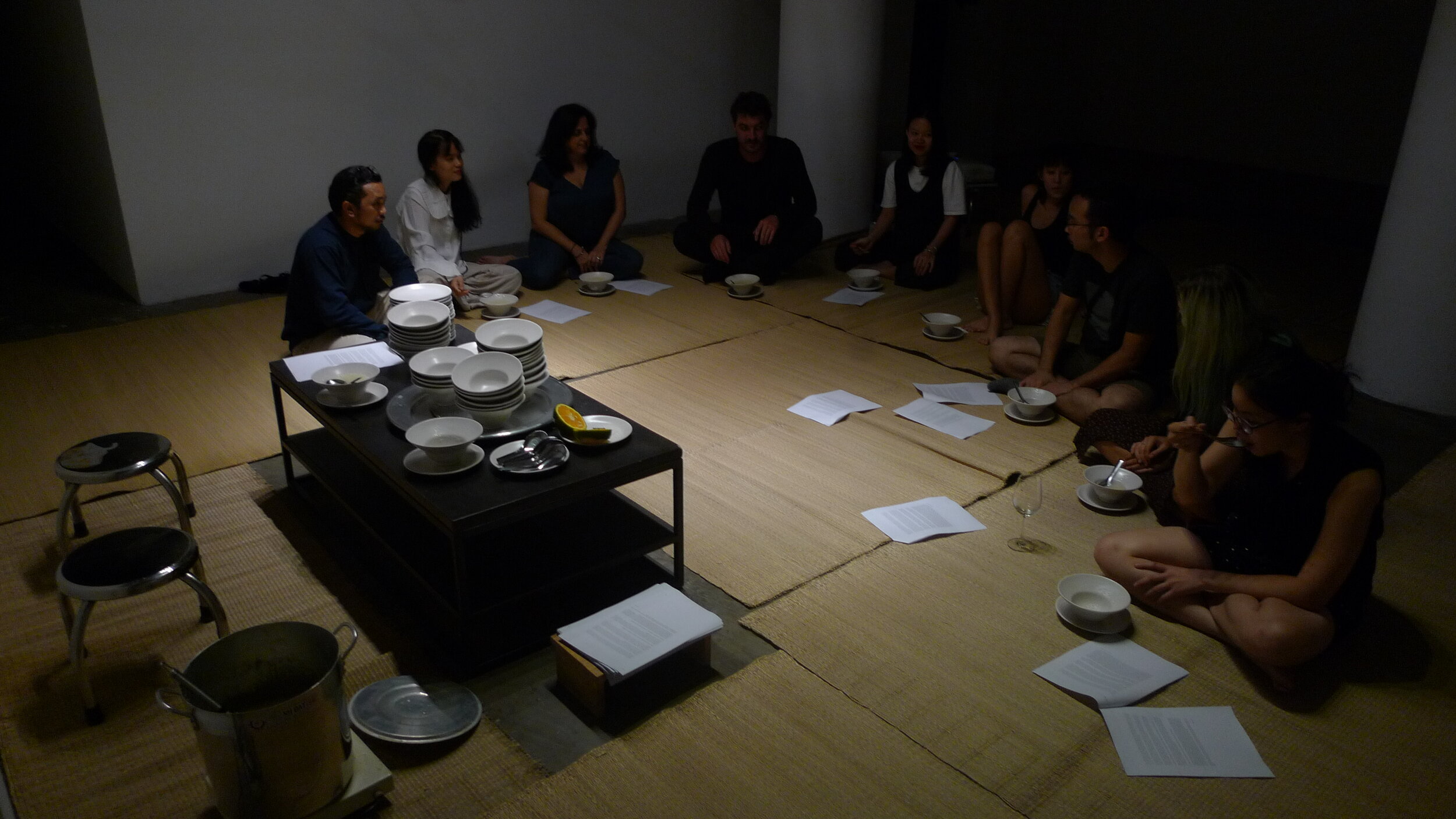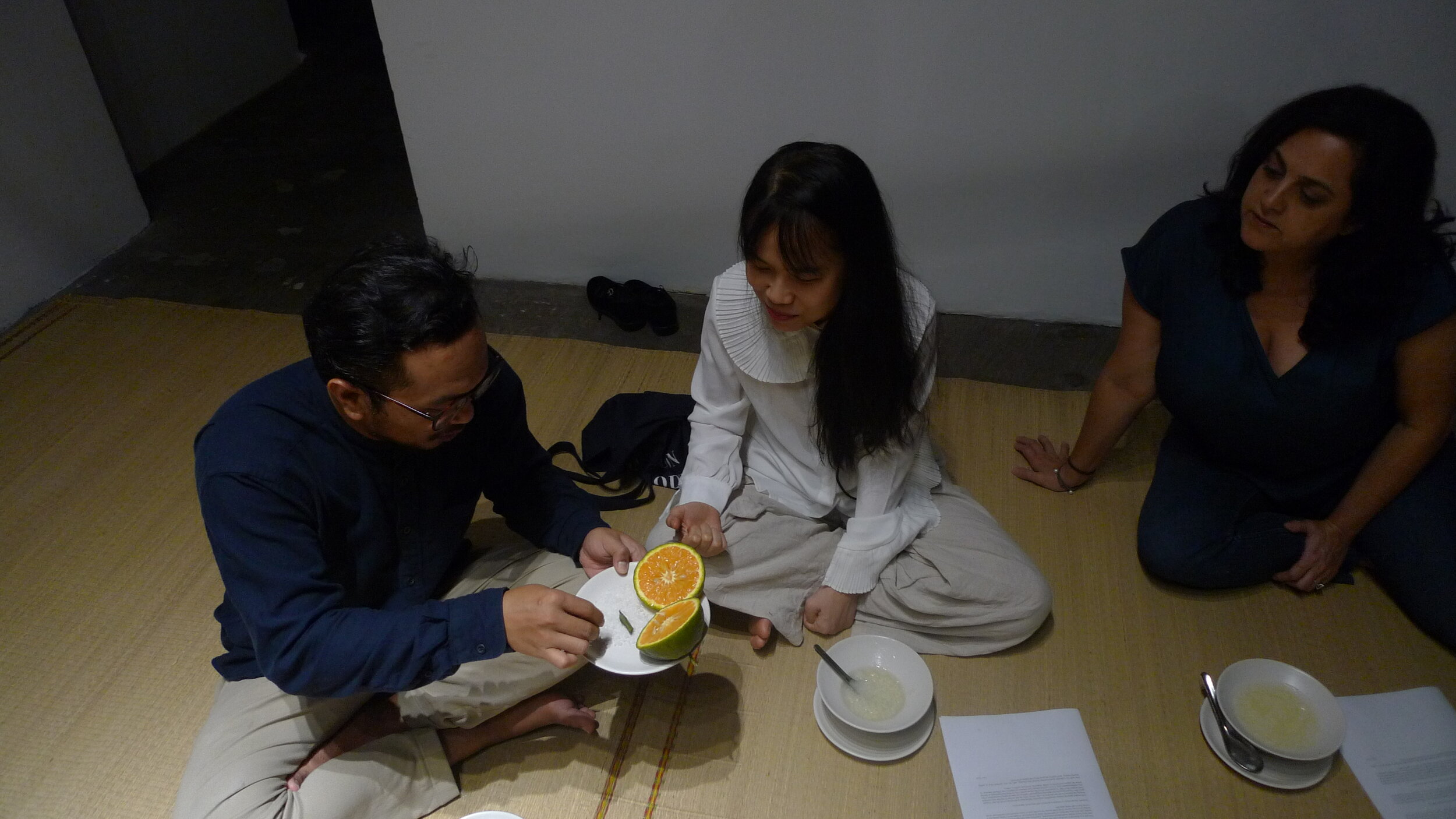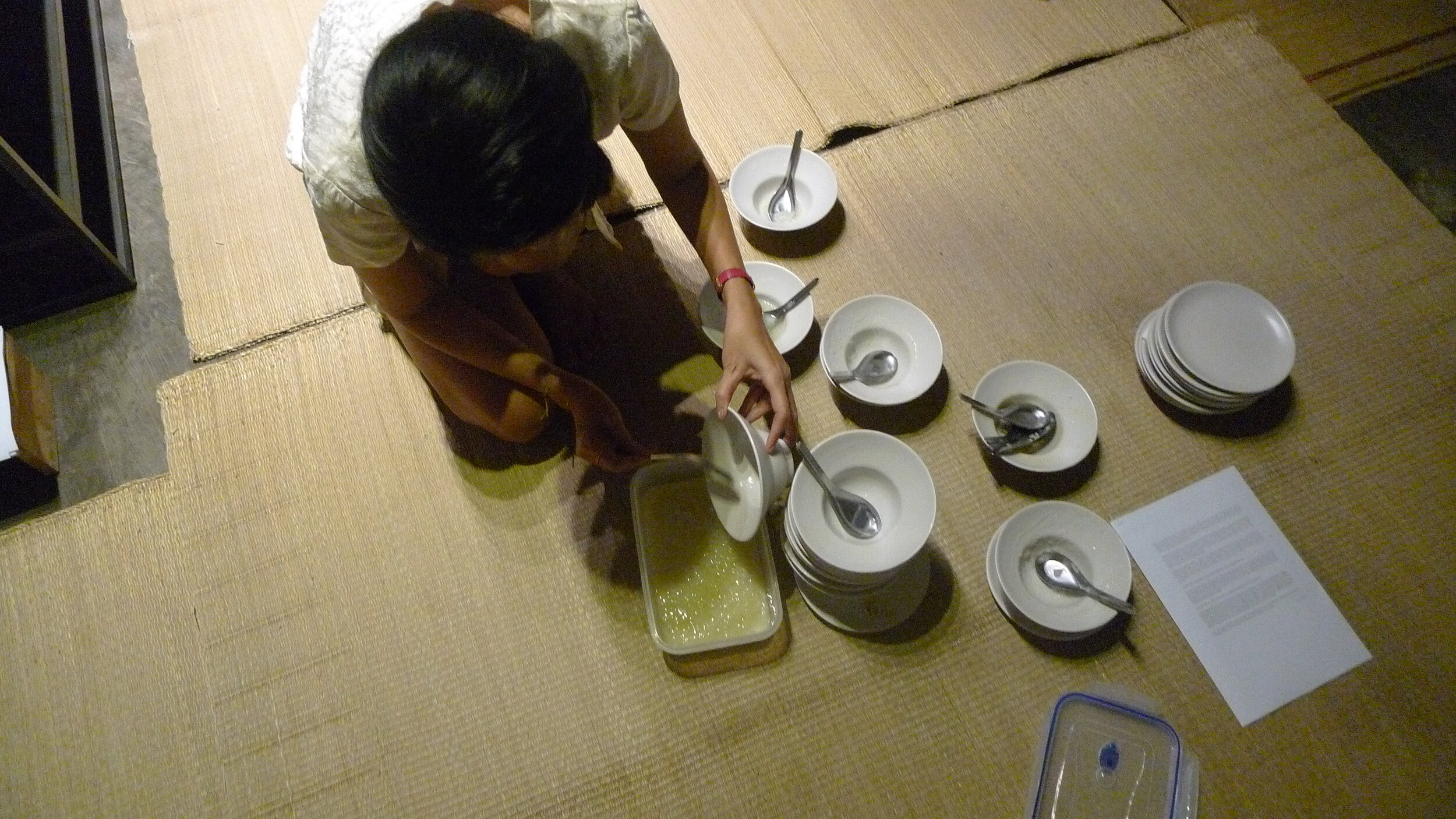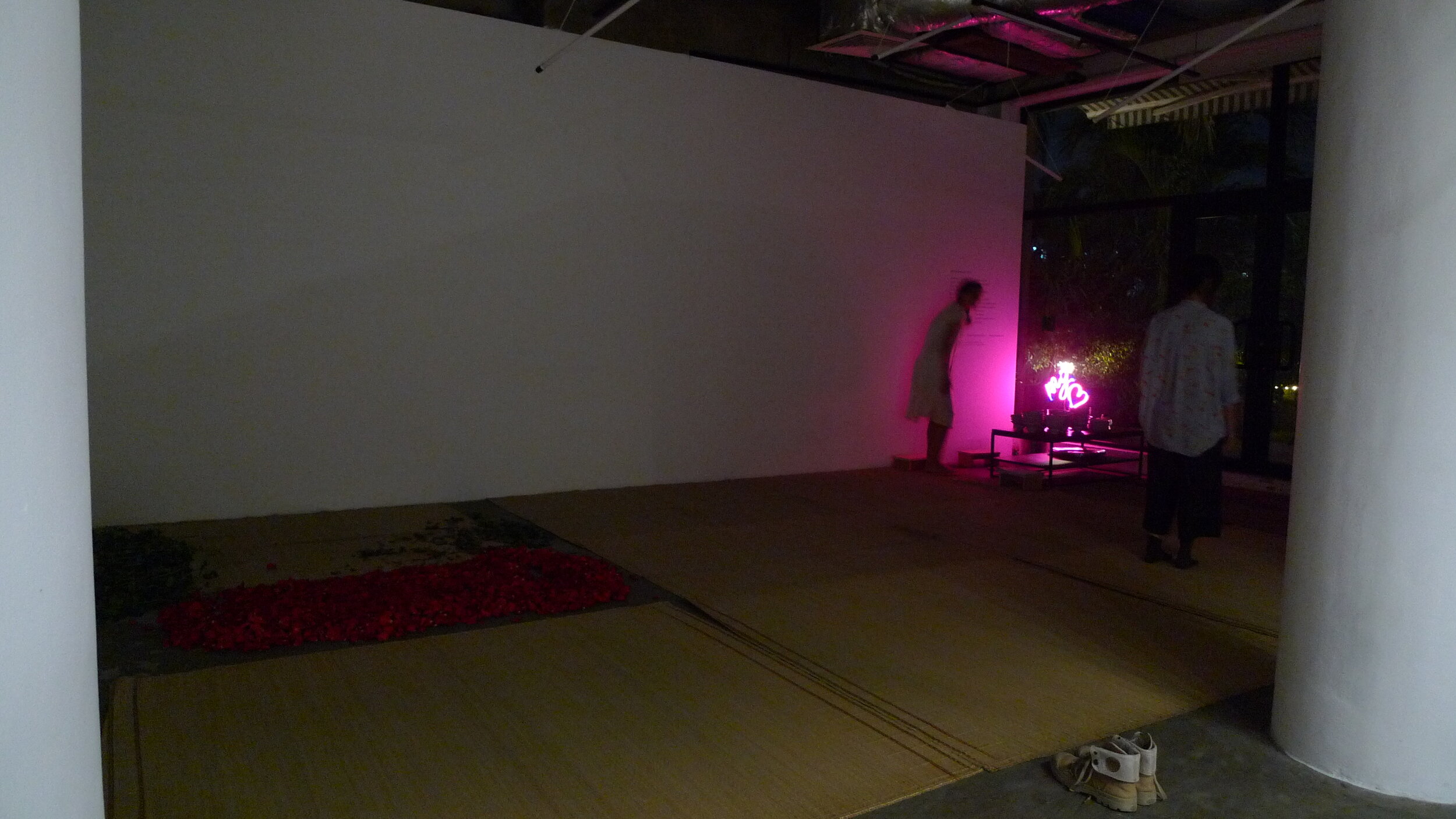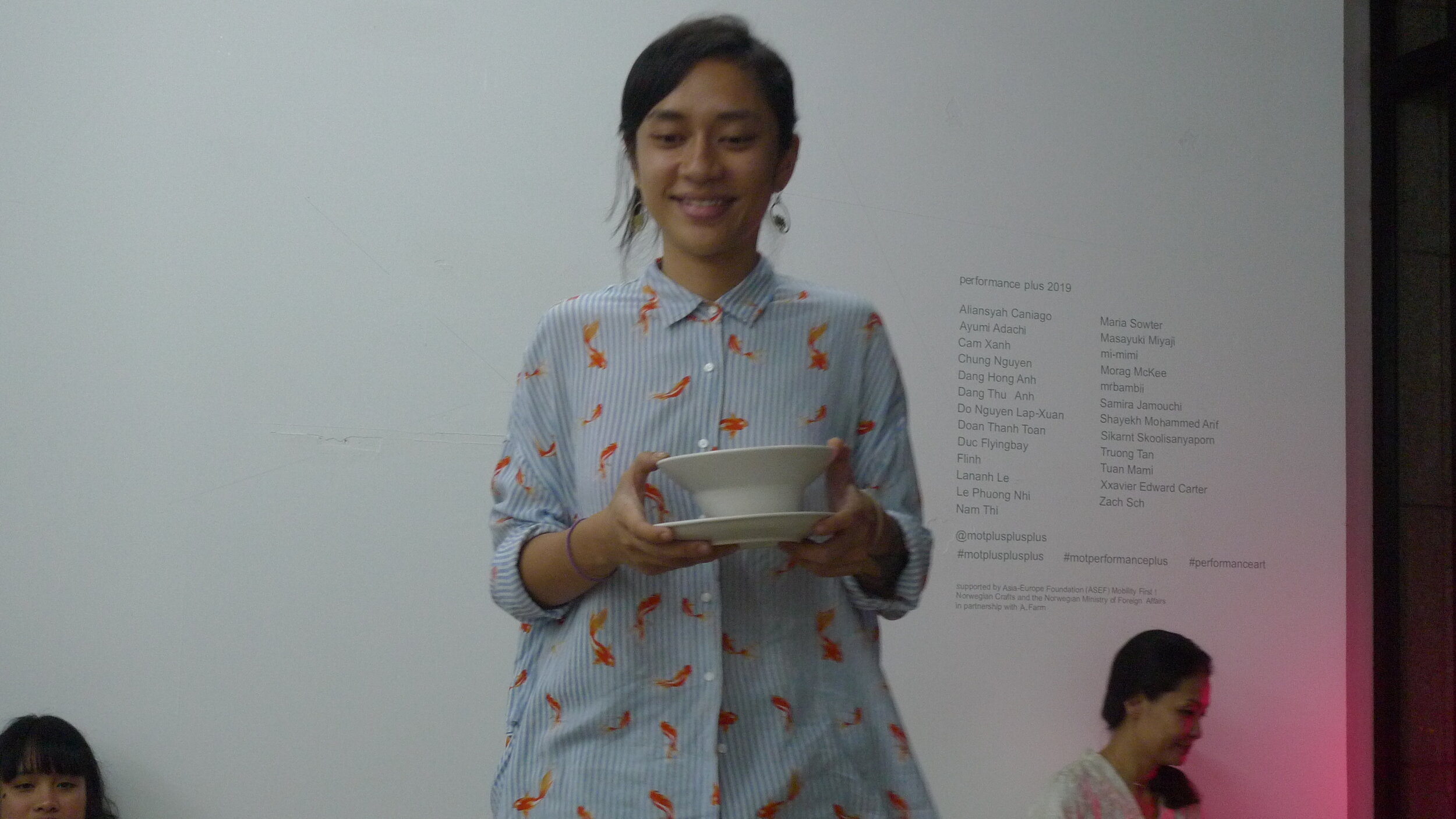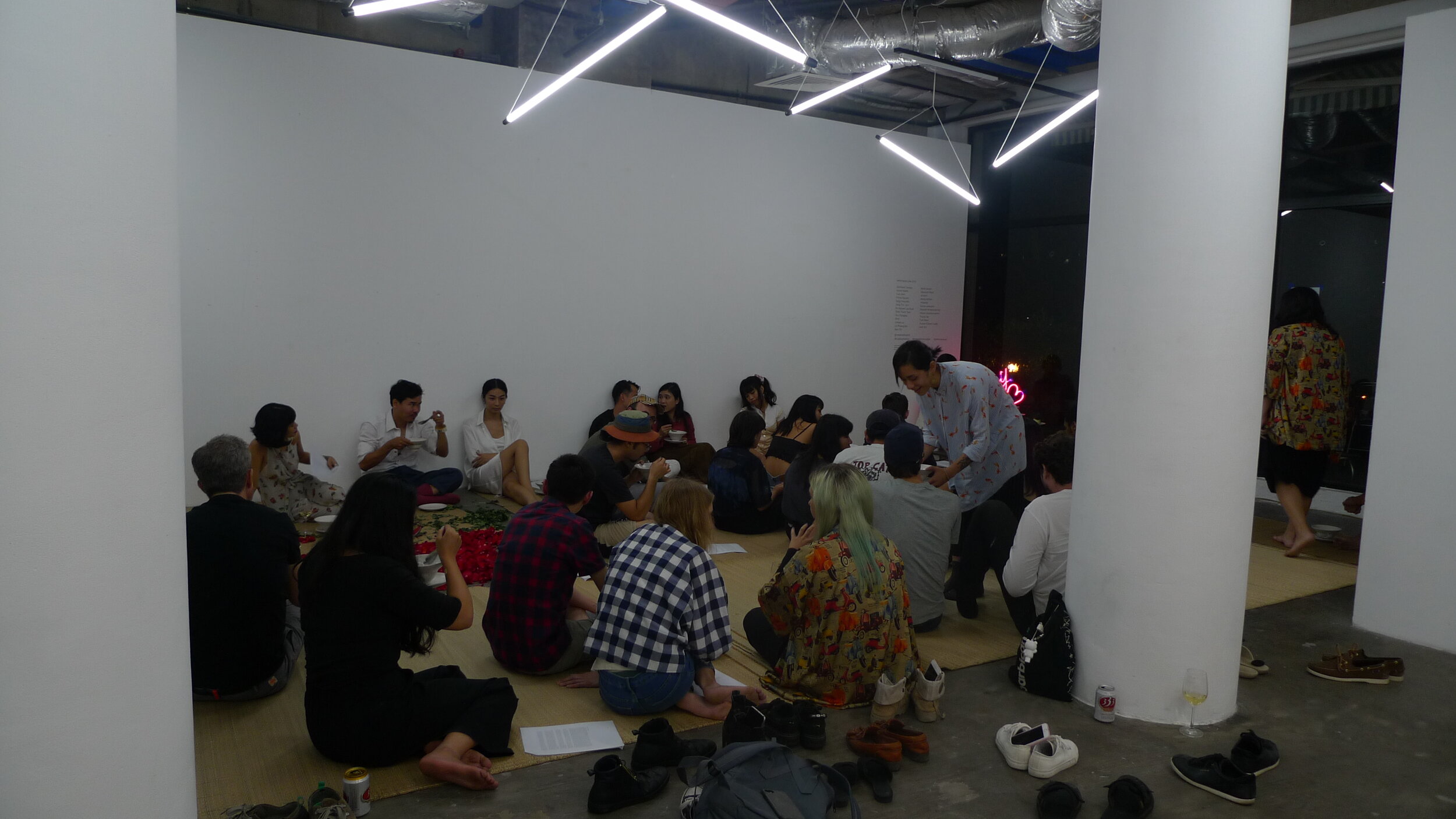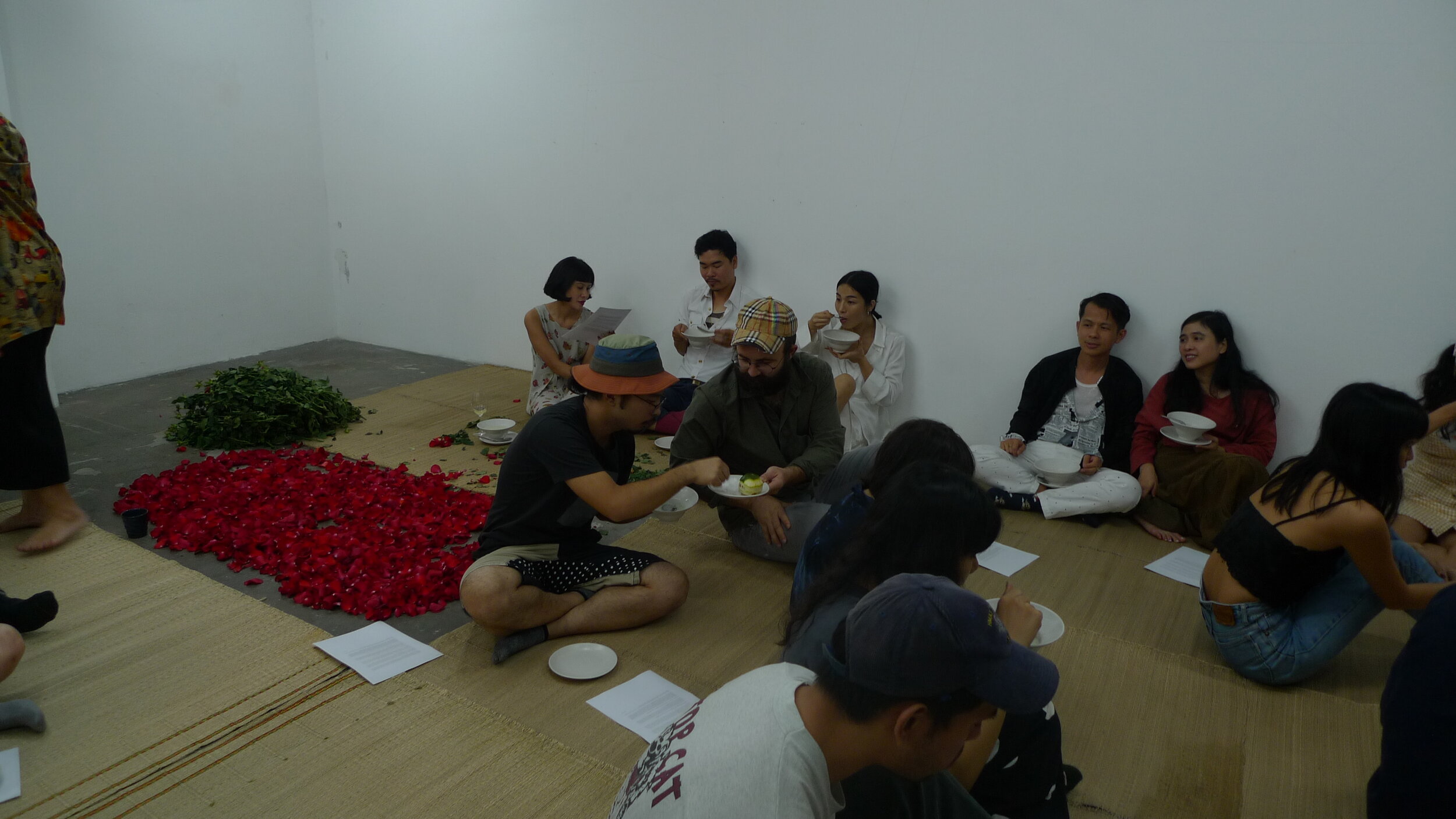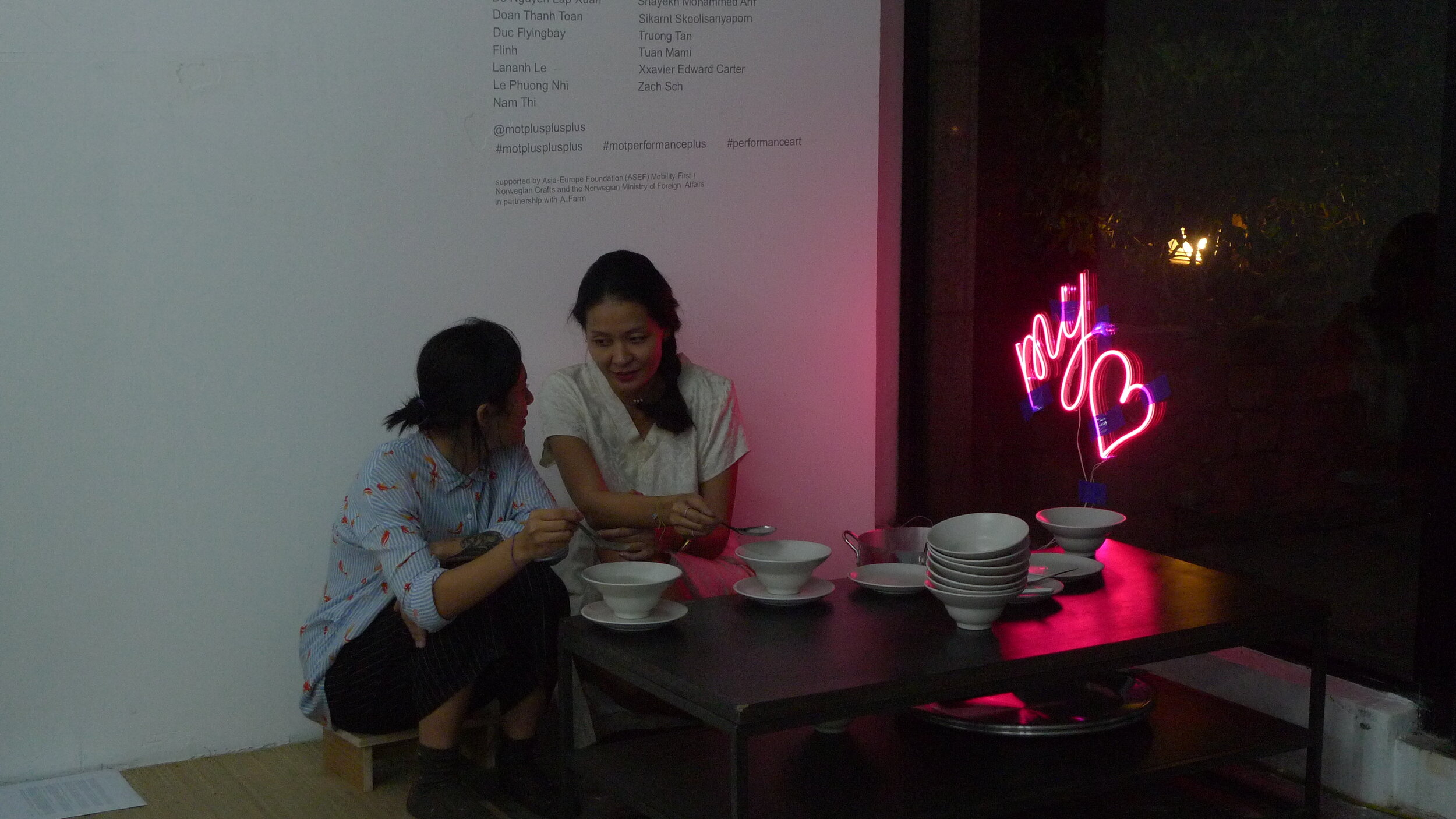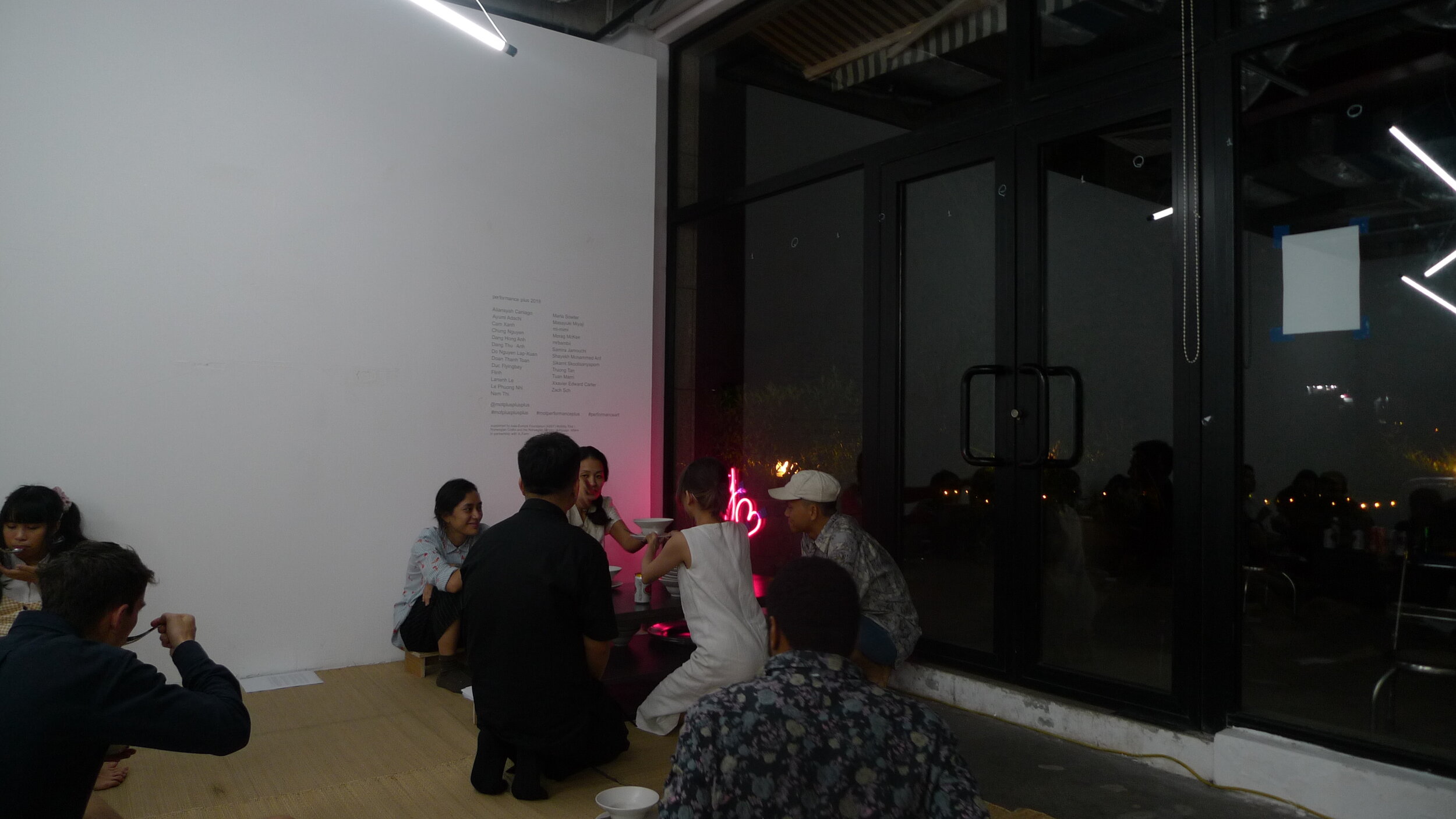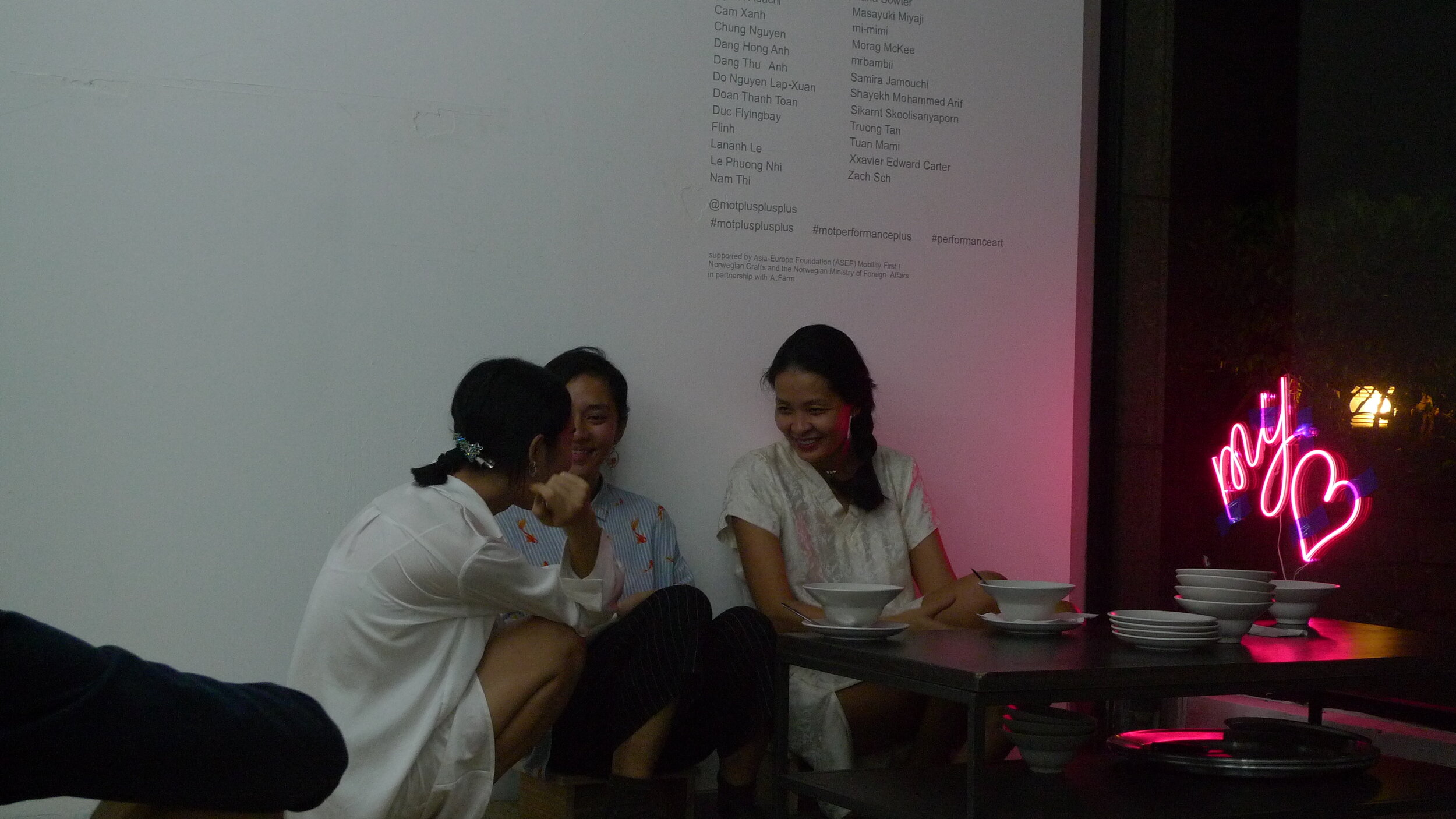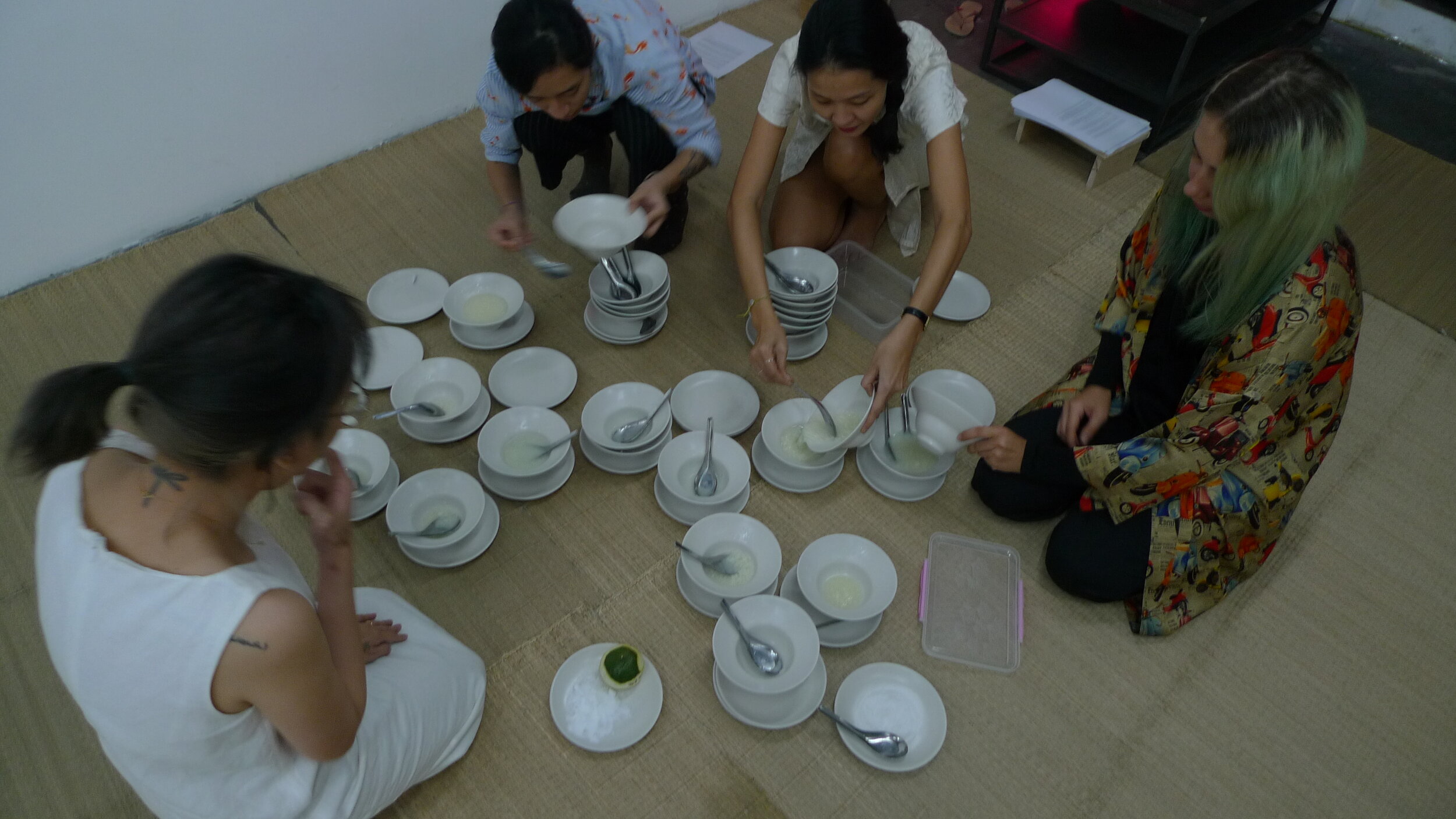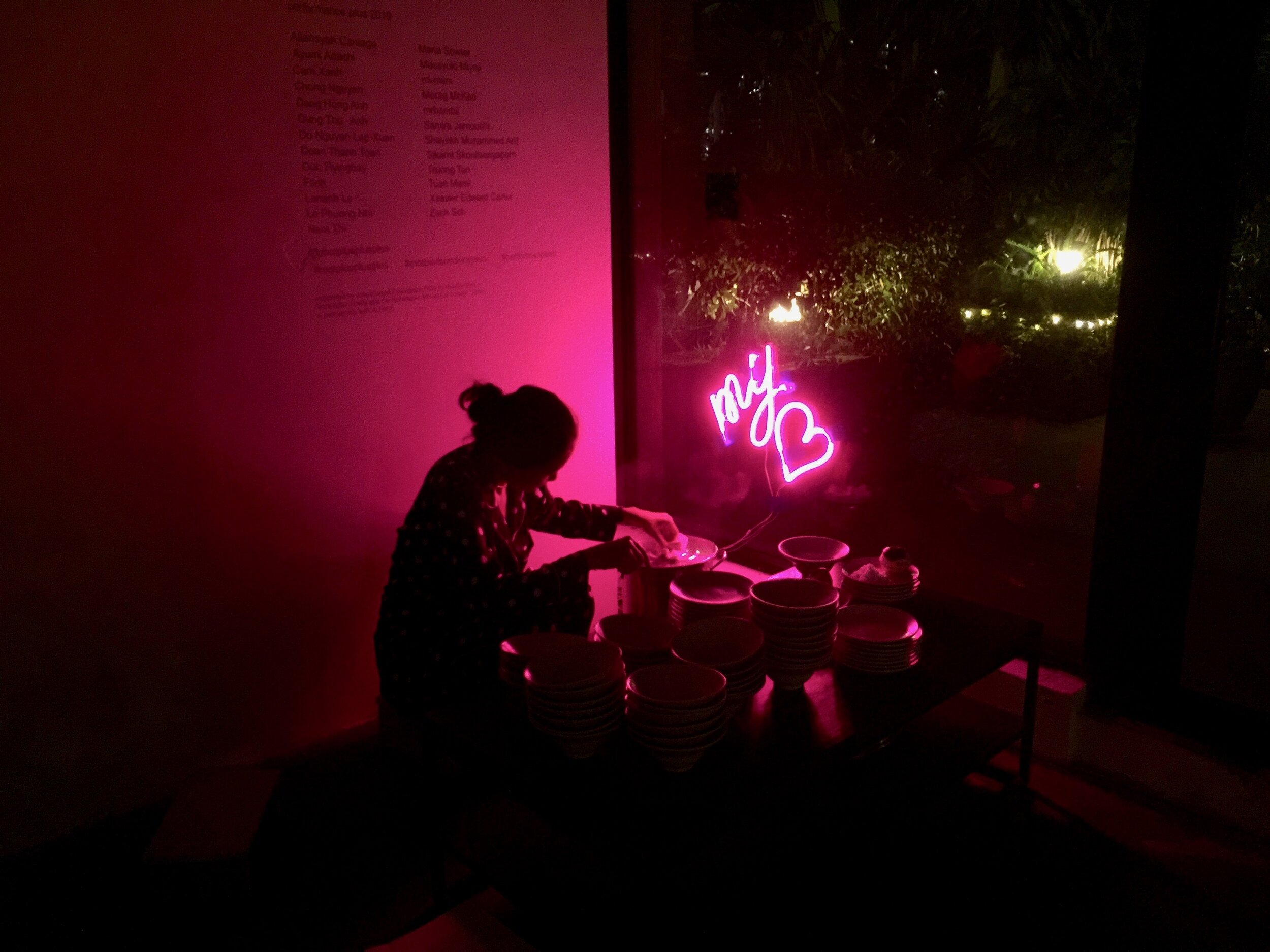ChaoArt|ArtChao session #2/healing
2019
performance
ChaoArt|ArtChao session #2/healing
About Chao Art Cháo/Art is an intriguing event created by Cam Xanh, co-founder of Post Vidai Collection and DiaProjects. The gathering unfolds in a magical space where a group of artists (including Cam Xanh herself along with fellow artists, writers and curators) cook and serve plain cháo, the most basic type of Vietnamese rice porridge, to customers, guests of honour, tourists, neighbours, voyeurs, vagabonds, as well as those unable to pay at all. As the happening’s pièce de résistance, the simple cháo fulfills a two-fold mission: to detoxify as well as fortify the participants’ body and mind. In recent years, as the Vietnamese middle- and upper- classes become more exposed to a proliferation of fast food chains and high-end culinary imports, many have seen their health deteriorate due to indiscriminate overindulgence. In response, the new fad for health-conscious consumers is to follow “detox” diet formulas to eliminate toxins and recharge the body. This shift away from junk food and exorbitant eateries results in a return to elementary dishes such as cháo. A light bowl of rice porridge, once perceived as food merely for the poor, sick, elderly or infantile, is now back in vogue. Cam Xanh not only capitalizes on this new surge of public interest in “detox” diets but notes another function of cháo in Vietnamese society: its healing power. Cháo has always been the go-to nourishment for the impoverished during extreme famines as well as the ill or injured during recovery periods. Often served in familial or communal settings, cháo strengthens the body and reinvigorates the spirit despite its unadorned nature. Sociologically speaking, Cháo/Art might well be a disarming tale about artists and the poor in Vietnam surviving on the most basic food while the wealthier enjoy the freedom to purchase the same food for detoxifying and rejuvenating purposes. (Or companionship, or entertainment, or an opportunity to see and be seen – all possible motives for visitors to enter the Cháo/Art space). On the other hand, we are not obliged to read Cam Xanh’s happening as a grand metaphor for class struggle or the state of the arts and humanities in a rapidly industrializing country. Imagine walking by an open space in which unlikely cooks calmly stir huge pots of boiling porridge and sit among piles of ceramic bowls, ready to serve hungry, curious and/or amused customers who might or might not pay, but are willing to help and play along. Cooks vs. customers, performers vs. spectators, and artists vs. patrons are boundaries that are blurred once we enter Cháo/Art. Normative assumptions are flipped: the main delicacy is simple and unfussy instead of ostentatious or classy; the patrons give on a pay- as-you-wish basis (think of Cháo/Art as a bizarre fundraising event with a surrealist bend); the artists make art not by furiously dripping paint on canvas, installing oversized sculpture or shocking the audience with post-modern performances. Instead the artists take up a humbler yet more open role. They patiently make a minimal dish and invite us to sit down, give an awkward smile or knowing nod, look confused, lend a hand, leave a note, and cultivate a special energy by simply being in the same place, huddling over the same warm food and listening to each other. Whether you belong to the category of those saturated with means or the starving-artist type, come for some cháo/art, whichever feels necessary.
by Quyên Nguyễn
